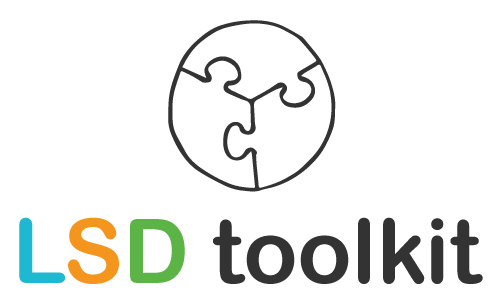With design thinking you usually work in so-called ‘design sprints’. These are short sessions in which the problem and the solutions are explored within frames . On this page we explain what design sprints are and how the ideation sessions of LSD deviate from the regular workshops.
Design sprints
If you are familiar with Scrum, you know the term sprint . But unlike Scrum, design thinking has no fixed sprint rhythm. Design sprint usually get longer the more frames we’ve explored. This is because you work from coarse to fine. The more promising the frame, the longer you explore it.
[metaslider id=”1999″]
In the context of the design sprint, the word ‘ideation’ is often used, a word that is indeed derived from ‘idea’.
Form
The ideation workshop can take any form you can think of as long as you ‘think with your hands’. From crafts and fiddling to cooking, and from graffiti to LEGO. We ensure that the workshop space and activities promote creativity. You can see examples of this in the slideshow below.
What LSD does differently
We have often seen it: a wonderfully inspiring two-day ideation led to beautiful and smart solutions. But on Monday, everyone was back at their desk and little had changed. In the LSD innovation workshop ‘it arises while you make it’. That’s nothing new, you do it in all ideation sessions. You sink your teeth into tough issues and after a number of sessions you come up with smart solutions.

But in the LSD design sprints you not only come up with new concepts and solutions, you also ensure that they fit within the vision and the connecting goal. And you are already researching how you can realize them, with whom and at what price.
In order to prevent it from just ‘nice ideas’, we take ample time in the LSD ideation sprint workshop for the Why and the How. We prepare how we can realize the concepts and sell them internally. To this end, we look at how we can (better) fit them into the strategy and purpose. And we already practice with the manufacturing process and investigate how we can realize the concepts, with whom and at what price. This exercise appears to be of vital importance to include the management and budget holders – who were not present at the ideation sessions – in our enthusiasm. To the LSD design sprint / ideation workshop
The Why of the customer
We know the Why of the organization, but the customer or user also has a Why. He not only buys a product (the What) but also an experience (the Why). Apple fanatics pay almost double for an iPhone (which cannot do more than Samsung’s counterpart) purely because they embrace the brand. At the same time, there are people who buy a Fairfone (which is more expensive than its competitors and significantly inferior in quality) because they support the company’s sustainable values. And there are those who trade WhatsApp for the less-used Signal because they want to make a fist against Facebook ‘s privacy violators .
In the LSD workshop you not only come up with a What, but also a Why.
Multidisciplinary
The LSD coaches are M-shaped. They master several specialisms. For example, the coach with the design thinking ‘PET’ also has extensive experience with the strategic side of organizations and with the process side. Only then can the LSD coaches simultaneously dig into the What, Why and How. As a result, it does not stop with nice ideas, but the goals are achieved. We already do this in the workshop. In this way we harness the creative energy of the group that often fades away as quickly as reality knocks on the door.
So come ‘think with your hands’. Or with your teeth …
View the LSD design thinking workshop with ideation here (text in Dutch, workshop in English).
